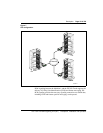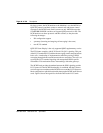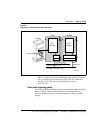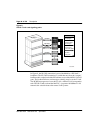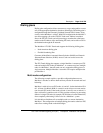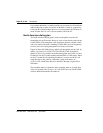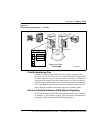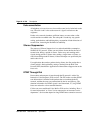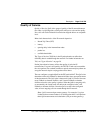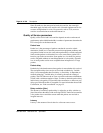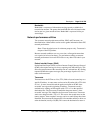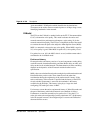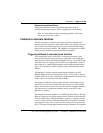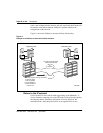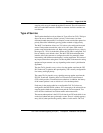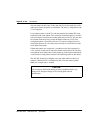
Description Page 53 of
378
ITG Trunk 2.0 ISDN Signaling Link (ISL) Description, Installation and Operation
Quality of Service
Quality of Service (QoS) is the gauge of quality of the IP network between
two nodes. As QoS degrades, existing calls suffer poor voice and fax quality.
New calls will not be initiated if transmissions degrade below an acceptable
level.
Behavioral characteristics of the IP network depend on:
• Round Trip Time (RTT)
•latency
• queuing delay in the intermediate nodes
• packet loss
• available bandwidth.
The Type of Service (TOS) bits in the IP packet header can affect how
efficiently data is routed through the network. For further information on
ToS, see “Type of Service” on page 59.
Packet jitter related to latency affects the quality of real-time IP
transmissions. For good voice quality, the ITG ISL Trunk card reassembles
the voice packets in an ordered continuous speech stream and plays them out
at regular intervals despite varying packet arrival times.
The user configures a required QoS for the ITG node in MAT. The QoS value
determines when calls Fallback to alternate facilities due to poor performance
of the data network. The QoS value is between 0.0 and 5.0, where 0.0 means
never Fallback to alternate facilities, and 5 means Fallback to alternate
facilities unless the voice quality is perfect. When the QoS for outgoing calls,
as measured by the Leader card, falls below the configured value, calls
Fallback to alternate facilities. Once the QoS rises above the configured
value, all new outgoing calls are routed through the IP network.
Note: QoS is measured per remote gateway. For example, if a given
Leader has three remote leaders in its dialing plan table, it will perform
three QoS measurements and calculations (one per remote gateway).



